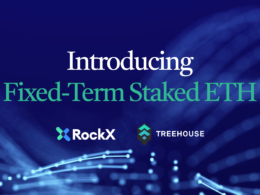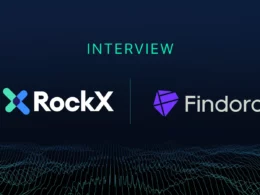For any users of cryptocurrencies or blockchain-based services, the name RPC probably means very little, but it’s actually a key element of transforming digital ledgers from revolutionary ideas to important, tangible cogs of an efficient system.
RPC protocols are an essential step in enabling communication between decentralised applications and the chains proper, and the specific choice of RPC type can significantly impact the efficiency and purpose of the applications they serve.
But let’s start this analysis with a simple question: what does RPC stand for?
A Fundamental Link

RPC is the acronym for Remote Procedure Call, and it’s not a crypto-specific term.
It’s borrowed from generic programming language and it represents a slender software communication protocol enabling data exchange between a program (or client) and another remote one (often called server) that belongs to a separate network – whilst bypassing much of the unnecessary detail of that new network’s shape.
The server then usually processes this request through what is called a ‘subroutine’ as per the client’s request, relaying the necessary info back through the connection granted by the RPC.
Within the blockchain environment, this mostly means giving Web 3.0 solutions and dApps in general access to the information contained on several different blockchains without requiring full integration with said digital ledgers. And the ‘server’ as explained before is a blockchain node, thus taking on the name of RPC node.
A Multi-Purpose Tool

They are sometimes referred to as RPC ‘Endpoints’, as they are the destination of the data request put forward by the client. This name can be confusing at first.
RPC nodes are, in practice, computers with blockchain client software, all enabled to process RPC responses and create access to data – meaning the names RPC node and RPC Endpoint are redundant as all RPC nodes are also receivers.
They are, however, quite varied in their intended purpose and thus, resulting in very different performance and efficiency outputs.
Public RPC Endpoints are, like all shared infrastructure, available for any users to submit requests to. Due to the much wider pool of potential utilisation, they are also almost always rate-limited resources and thus not suited for supporting production-grade applications.
As they are not managed by any specific private entity, their upkeep is the responsibility of the community and they offer very little if any customer support or active development. It goes without saying that they also offer no scalability, a big drawback for any dApp ambition.
But, as the saying goes, beggars can’t be choosers – and most users of these nodes have made peace with this and suited their requests to these limitations.
For those unable to do so, there is the option of establishing a private RPC node. This is a dedicated solution meaning one’s own dApp requests can take up the entire capacity of the RPC node without fearing rate-limited performance output.
These nodes can be either set up independently by individual users, or purchased as a service by a node provider – even in this case, the provider will usually guarantee a minimum dedicated service level at all times.
Finally, there is another type of RPC node, called ‘Alternative RPC Endpoint’. This is simply a back-up RPC node not used regularly but prepared and ready to come into play shall the primary RPC endpoints fail, thus increasing the reliability of the dApp’s connection to the chain in question.
What Can RPC Nodes Retrieve?

A better question would be what RPC nodes can’t retrieve, as they come in a plethora of forms all suited at different types of blockchain data requests.
Relying on a standard specification called JSON-RPC which ensures high speeds in data retrieval, the requests follow the server-client model as mentioned before. The different type of data that can be requested are too long to list here, but they can be divided into generic ample categories based on their main focus.
For example, with the Ethereum network, the methods of retrieval are divided into three main groups.
The first group, amusingly called ‘Gossip Methods’ is a top-level type of request: it only follows the ‘head’ of each blockchain and it’s mainly used for identifying and querying blocks across the ledger.
The second, ‘State Methods’, contains more granular information: it provides a report on the current ‘state’ of each and every data point contained on the blockchain. A sort of ‘live view’ snapshot of the ledger’s contents.
Finally, ‘History Methods’ serve as an archival search within the past of a certain blockchain: they retrieve the historical records of old blocks that are part of the chain.
DIY or Ready Made

As mentioned, the final decision to make for anyone wanting to set up blockchain access for their dApp is to choose how to engage with RPC requests: cheaply, through public nodes, or privately.
When going privately, those wanting to keep their focus on the dApp side of things and maintaining their efforts minimal in terms of comms with the chains tend to opt for the services of an RPC node provider.
Save for those with a knack for DIY or an intense desire for technical autonomy, RPC node providers tend to be the best resource: they offer scalability, efficiency and smooth running with a minimal added cost.
Most importantly, they have already permeated several different ecosystems, with plenty of commercial offerings for both Ethereum and Solana solutions.
In 2023, there’s very little excuse for struggling with setting up and understanding efficient RPC endpoints – and this is only likely to continue increasing the quality and development rate of Web 3.0 apps.









